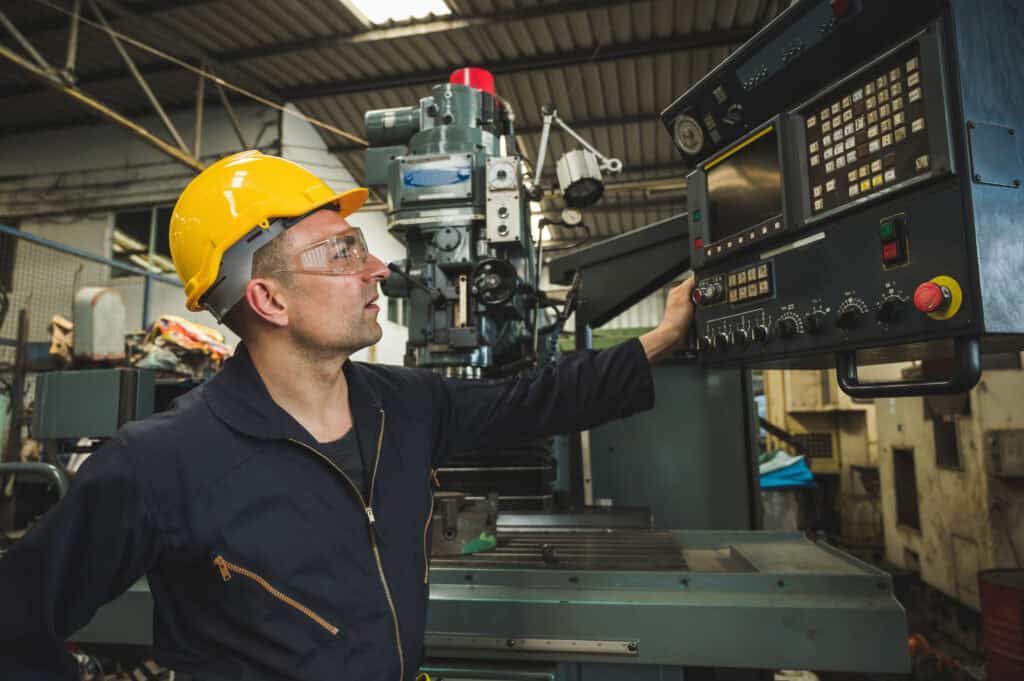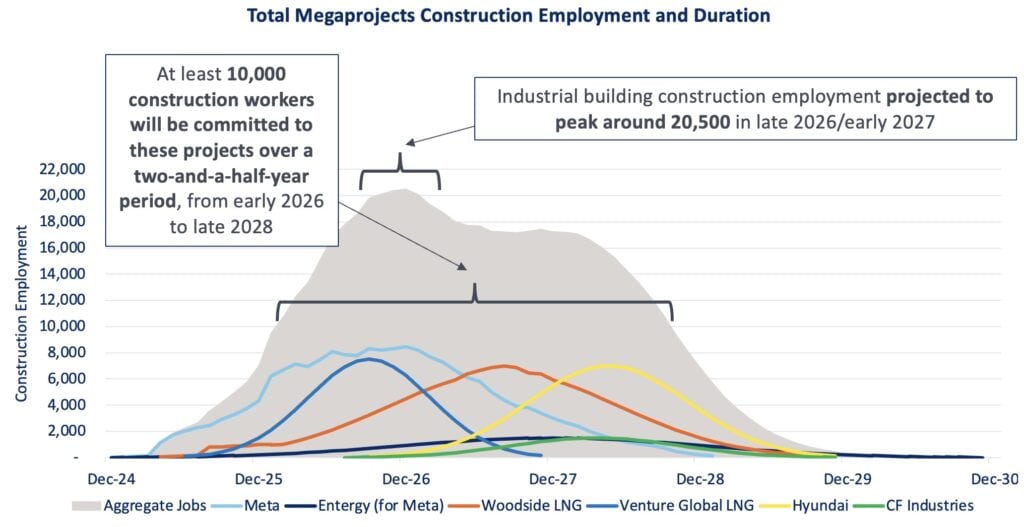
- Multiple concurrent megaprojects in Louisiana will employ an estimated 20,500 industrial construction workers at their peak
- Past growth waves of construction have driven population in-migration and created statewide coordination in training programs
- Regional impacts will drive unique north and south Louisiana gains at the same time
Six massive industrial projects are about to reshape Louisiana’s economy—and its workforce. From Meta’s AI data center in Monroe to LNG plants near Lake Charles and steel and clean energy expansions in the Capital Region, these builds will push the state’s industrial construction employment to new highs.
At its peak in late 2026, nearly 20,500 workers—about 24% of Louisiana’s industrial construction labor force —will be tied to these six projects alone.
The regional impacts are impressive. Monroe could see its construction workforce grow nearly 4x. Lake Charles demand could more than double. Baton Rouge, already a construction hub, will experience the surge by 2027.

History says Louisiana can handle it. From 2012–2018, the state added 30,000 construction jobs and drew 62,000 new residents. This time, LSU has already doubled its construction management graduates since 2014, while community colleges have received plaudits for how they scaled construction training pipelines.
Policy Implications: With just these six overlapping construction timelines across multiple regions, it highlights the ongoing importance of coordination on workforce training, housing, and talent retention and attraction. Louisiana’s prior experience and ongoing investments in education and workforce systems provide a solid foundation to manage these demands.
Our insight: Louisiana isn’t just building projects—it’s building its future workforce. If leaders manage this moment with precision, the state could turn short-term labor spikes into long-term prosperity.
